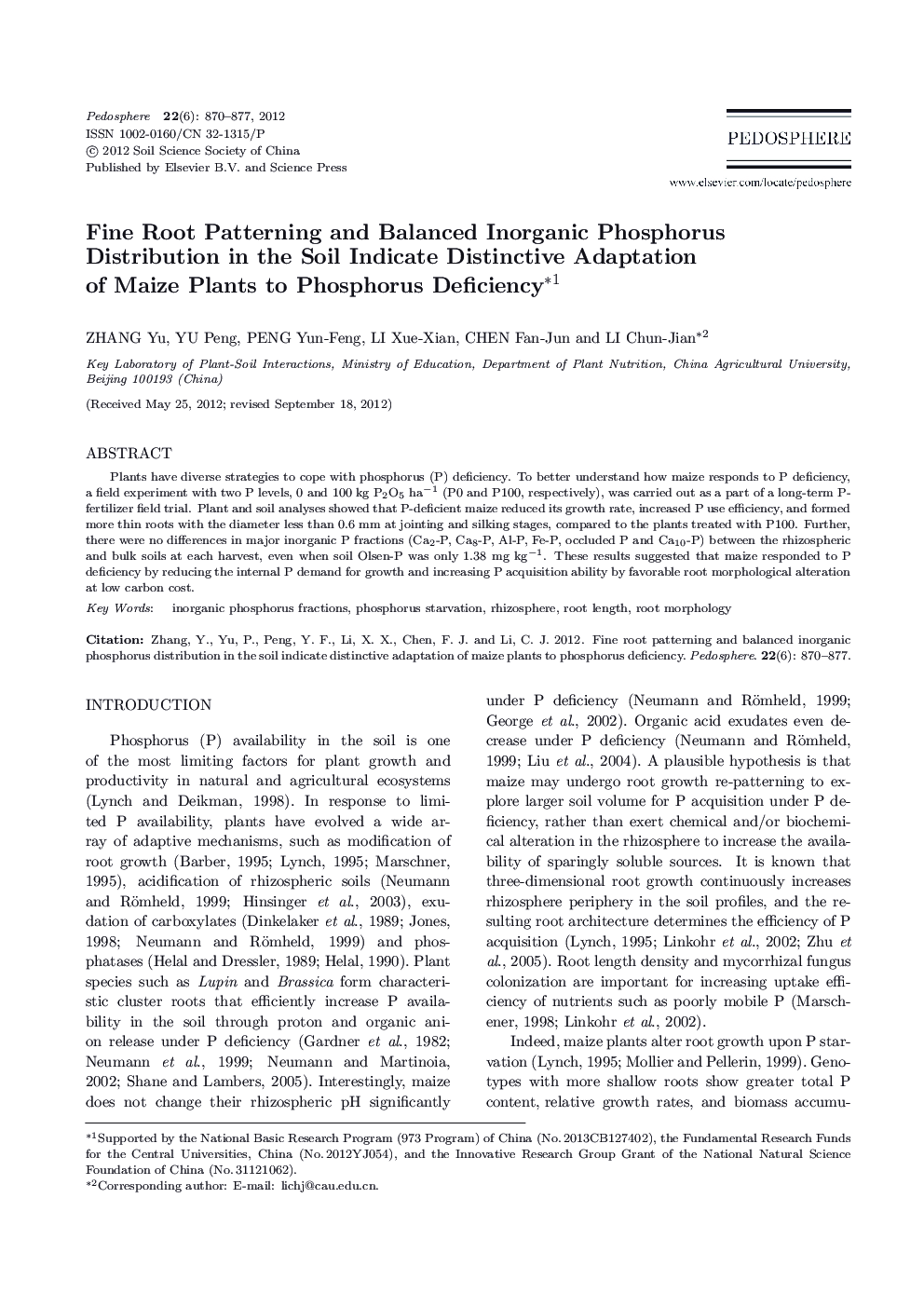| کد مقاله | کد نشریه | سال انتشار | مقاله انگلیسی | نسخه تمام متن |
|---|---|---|---|---|
| 4581569 | 1333707 | 2012 | 8 صفحه PDF | دانلود رایگان |

Plants have diverse strategies to cope with phosphorus (P) deficiency. To better understand how maize responds to P deficiency, a field experiment with two P levels, 0 and 100 kg P2O5 ha−1 (P0 and P100, respectively), was carried out as a part of a long-term P-fertilizer field trial. Plant and soil analyses showed that P-deficient maize reduced its growth rate, increased P use efficiency, and formed more thin roots with the diameter less than 0.6 mm at jointing and silking stages, compared to the plants treated with P100. Further, there were no differences in major inorganic P fractions (Ca2-P, Ca8-P, Al-P, Fe-P, occluded P and Ca10-P) between the rhizospheric and bulk soils at each harvest, even when soil Olsen-P was only 1.38 mg kg−1. These results suggested that maize responded to P deficiency by reducing the internal P demand for growth and increasing P acquisition ability by favorable root morphological alteration at low carbon cost.
Journal: Pedosphere - Volume 22, Issue 6, December 2012, Pages 870-877